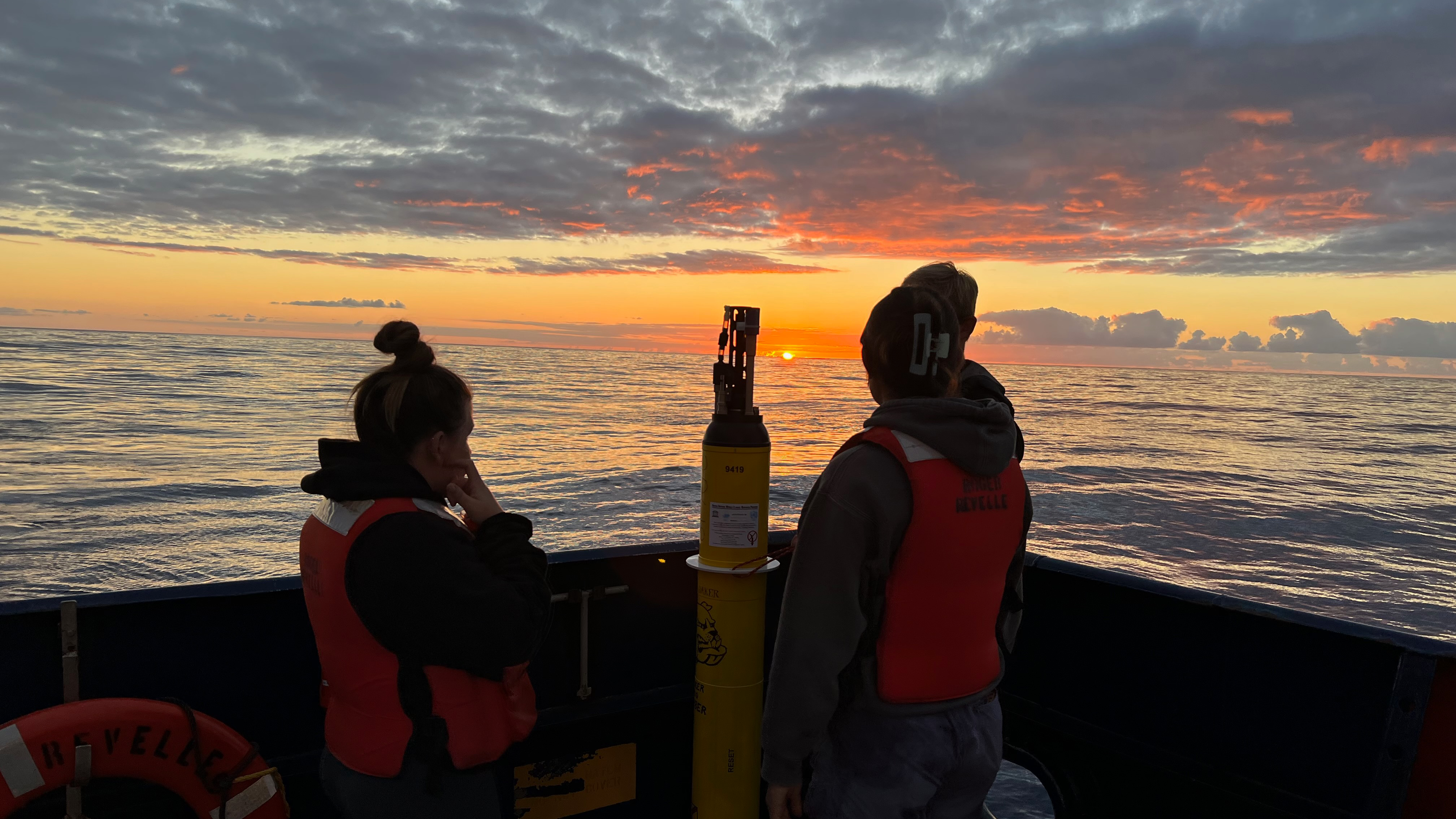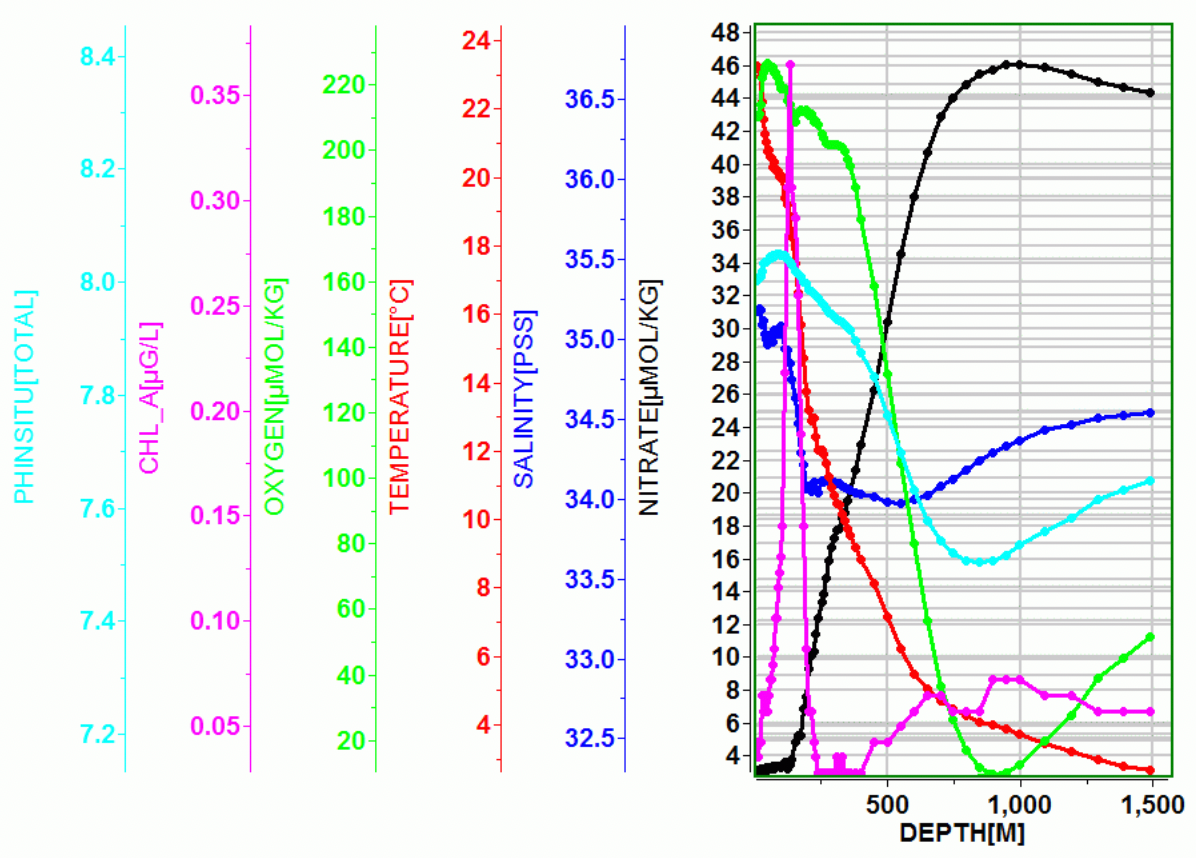26 Jun 2022
On Saturday, June 25, around 7:45 in the evening, flanked by a beautiful sunset [Image 1] and a rainbow on the other side [Image 2], we deployed our second biogeochemical Argo float of the cruise at 30N, 145W. Adopted by the Ida Baker High school in Cape Coral, FL, the “Baker Bio Bobber” was prepared for deployment on the back deck by Mason, our research technician of the day shift, as well as Turner and Alyssa, our two student CTD watch standers. Ever since the year 2000 there have been thousands of Argo floats (https://argo.ucsd.edu) drifting around all of the world’s oceans at about 3000 feet below the sea surface. Periodically they return to the surface for a few hours to transmit their data to a system of satellites orbiting our planet. All floats collect temperature and salinity data during their descents, drifts and ascents, and these data are used in near-real time by computers modeling the ocean circulation, similar to how the data from weather balloons are used in atmospheric models to predict the weather. Biogeochemical floats are the most recent addition to the Argo fleet, additionally measuring nitrogen, oxygen, chlorophyll A, as well as pH of the water, which together provide crucial information about the biological environment. The first profile collected by Baker Bio Bobber has already been received and the data indicate that all sensors are working well [Image 3].

Image 1: GO-BGC float Baker Bio Bobber ready for deployment. photo by John Ballard.

Image 2: Lovely rainbow during launch. Photo by Andrew Collins

Image 3: First profile of GO-BGC Float Baker Bio Bobber. Profile provided by Ken Johnson.
